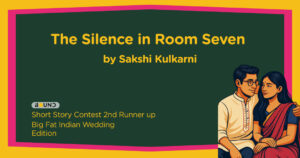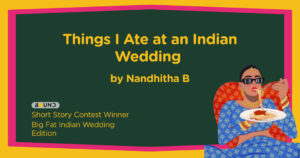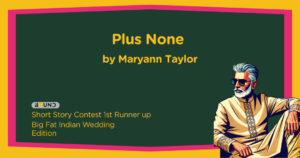Arjun Rajendran On His Love Affair With Poetry
- By Tara Khandelwal

Arjun Rajendran has been called one of the most versatile, contemporary Indian poets of today. He writes about wide-ranging themes: from memories to beetroots, and even about Snowy and Tintin! The poet, who is currently working on his fourth manuscript, was the Charles Wallace Fellow for Creative Writing at the University of Stirling, Scotland in 2018 and is the Poetry Editor of The Bombay Literary Magazine. He speaks to Michelle D’Costa about being vulnerable as an author, consciously expanding his themes and surprising himself, and on finding familiar stories in charming settings.
Most of all, I enjoy the company of writers who have become my friends, to be able to talk to them about literature but within the familiar setting of trust and camaraderie, over many bottles of good liquor and outside any institutional or exhibitionist glare. This is the reception that matters most to me, and why I love being a poet in India at this time.
From your book Snake Wine to your current work-in-progress, how do you see your journey as a poet?
In Snake Wine, I have admitted more vulnerability than in my other books; I wasn’t experimenting or pushing my imagination enough, or so I feel now- it was more rooted in nostalgia and travel. In my subsequent books/projects, I have tried surprising myself more, and have consciously expanded my themes, and ways of approaching them: speculative, absurdist, and my work-in-progress— historical.
We would like to know more about your current work (your fourth manuscript), the ‘Pondicherry’ project.
Years ago, my father had told me about these diaries that chronicled a by-gone era in Pondicherry, the 18th century to be precise, in great detail. To be sure, these comprise 12 copious volumes, and are all archived online. I really wasn’t sure how to approach this content: rich in mercantile details, names of ships, metallurgy, espionage, rivalry, superstition… (I’m still unsure to an extent). I considered dabbling with steampunk themes, or being wildly speculative through anachronism—I thought it might be interesting to see how the AIDS epidemic could have affected the Coromandel of the 18th century. In any case, I settled on a fairly straightforward historical approach- a few astute readers have told me it’s rather microscopic, and I’m laboring at this stage to make the poems more encompassing of the era and landscape. My interest in bettering my French and Tamil at this point is to be able to read the original texts of the era, outside of Pillai’s diaries.
Congratulations on winning the Charles Wallace Fellowship 2018. Can you tell us a little about the time you spent at the University of Stirling?
It’s still too early for my range of experiences during my time as CW Fellow to properly sink in: from studying nautical models up-close at the National Maritime Museum in London, and seeing, from a distance, an extinct volcano on the island of Raasay—home to the great Scottish poet Sorley MacLean, to learning that haggis is, contrary to hearsay, delectable!
The fellowship, among its many gifts, brought me to familiar stories in charming settings; including finding a vintage copy of Aladdin and the Wonderful Lamp in a used-book store in Edinburgh, and reading Gandhi’s letter from Yerwada Jail at the British Library.
I love your poem ‘Interviewing a Beetroot’ from your second book Cosmonaut in Hergé’s Rocket. Can you tell us how the poem came to you?
Just the chicanery of the interview process- where the interviewee and the interviewer know the BS they are straddling. Again, something I always wanted to write about- but I’m indebted to that beetroot that fell into my train of thoughts that evening, and helped me find an innovative way to make up for all the fuck-yous I repressed in meeting-rooms.
How do you decide on the structure for your poems?
Depends on the content- how precise I want it to be, and if it calls for a departure from a symmetrical alignment. In “Interviewing a Beetroot”, for instance, the structure reflects the playful/mocking nature of the poem, whereas in “Marie Gertrude” (part of my work-in-progress), the stanzas resemble the bow and stern of a ship. All I can say with clarity is that I usually don’t decide the structure until I start writing.
In your second book, the structure of your poems was inspired by the physicist, Richard P Feynman. Can you tell us more about this?
The structure and content were loosely inspired by Feynman. I started off wanting to create pictorial poems from what are called Feynman Diagrams that show the interaction of basic particles. I wasn’t getting anywhere there (and I’d hate to want to do a Ph.D. for a few poems), so I concocted a brew, where Feynman and Ramanujan are resurrected through a fabled number- 1729; where a quote by Feynman dwells alongside the memory of a starved hedgehog, where I try linking my uncle’s account as a hospital intern to Einstein’s phrase for Quantum Entanglement, and so on…
Can poetry be taught? You’ve conducted workshops. How has the experience been?
I love doing workshops- am always surprised by the interpretations the audience brings in, how a poem begins firing its engines and gathering more velocity as the quality of the readership fuels its journey. Critiquing, as you might know, is probably non-existent in India. And I really have no patience for the hubris of others- have my own to deal with. Just like learning a new language, even a good teacher can only do so much- there needs to be self-initiative to read extensively, to bring that critical thinking into the next piece one writes, to admit that an idea is a squib, to re-draft, re-submit, and yet not lose the wonderment of this art.
Do you enjoy being an editor? You had served as editor for The Four Quarters Magazine (now defunct) and currently edit at The Bombay Literary Magazine. Does it influence you as a poet?
Yes, editing is the ideal job for me- both TFQM and TBLM have brought me to new voices, and definitely, the poems I prefer to publish in a way reflect the poems I’d like to write. Influence? I think all (good) reading influences me at some level, and that includes the poems I choose to publish.
Is there any difference in the reception of poetry in the US and in India (now that you’re based here)?
In the US, I wasn’t exposed to the literary scene at all. My interactions with writers were all in public libraries. I think the scene is spectacular in India at this time—I had never enjoyed a similar platform in the States. Most of all, I enjoy the company of writers who have become my friends, to be able to talk to them about literature but within the familiar setting of trust and camaraderie, over many bottles of good liquor and outside any institutional or exhibitionist glare. This is the reception that matters most to me, and why I love being a poet in India at this time.
Travel. Get a pet. Underline.
What do you think about the current Anglophone poetry scene in India?
I think it’s very promising- the crusted, academic barriers to poetry are eroding away I feel, thanks to the internet and to journals and small presses. For me, the current under-50s generation of Indian English poets is doing more with content, style and language than I have ever encountered before in IE poetry. There are still these gatekeepers I’ll refrain from naming- who like to impose hierarchies, who have a clear modus operandi about publishing.
You mentioned that you’re working on your Tamil. Can you tell us a little about the current Tamil poetry scene and whether you’d want to explore writing in Tamil?
I have just begun writing the alphabet in Tamil, so a long way to go if I want to start writing in the language. Unfortunately, I haven’t read much Tamil poetry in translation, but hoping to read originals soon. And it’s interesting that your question comes in the wake of Salma winning a major poetry award.
I recently read your poem ‘Prodigy’ in Poetry at Sangam. The reader meets your mother here. Through your essay in The Sunflower Collective, you’ve told us that she used to write for journals like Chandrabhaga. Does your mother still write?
No, she doesn’t write anymore, at least nothing that can be termed creative.
What does she think about the poetry produced today and her son being a poet in this time?
She isn’t driven to read/discover new work on her own; but she does, on occasion, enjoy the poems I read out to her. As for her son being a poet, she vacillates between bragging about it and denial.
What would your advice to young poets be?
Travel. Get a pet. Underline.
Contemporary poets in India we should be reading.
I’d rather list some contemporary journals/magazines in India that should be read (the poets featured there—including myself—are no joke: ANTISERIOUS/VAYAVYA/AAINANAGAR/THE BOMBAY LITERARY MAGAZINE/MITHILA REVIEW)
Poetry/Prose/Films/Music you experienced recently that you’d like to recommend.
“Story of a Brief Marriage” by Anuk Arudpragasam. I think everything else —literature/films/music— till now, pales in comparison.

Written by Rheea Mukherjee
Rheea Rodrigues Mukherjee is the author of The Body Myth (Unnamed Press /Penguin India 2019) which was shortlisted for the Tata Literature Live First Book Award. Her work has been published and featured in Scroll.in, Southern Humanities Review, Los Angeles Times, Huffington Post, Buzzfeed, Vogue India, Out of Print, TBLM, and Bengal Lights, among others. She co-founded Bangalore Writers Workshop in 2012 and currently co-runs Write Leela Write, a Design and Content Laboratory in Bangalore, India. Rheea has an MFA in creative writing from California College of the Arts.









